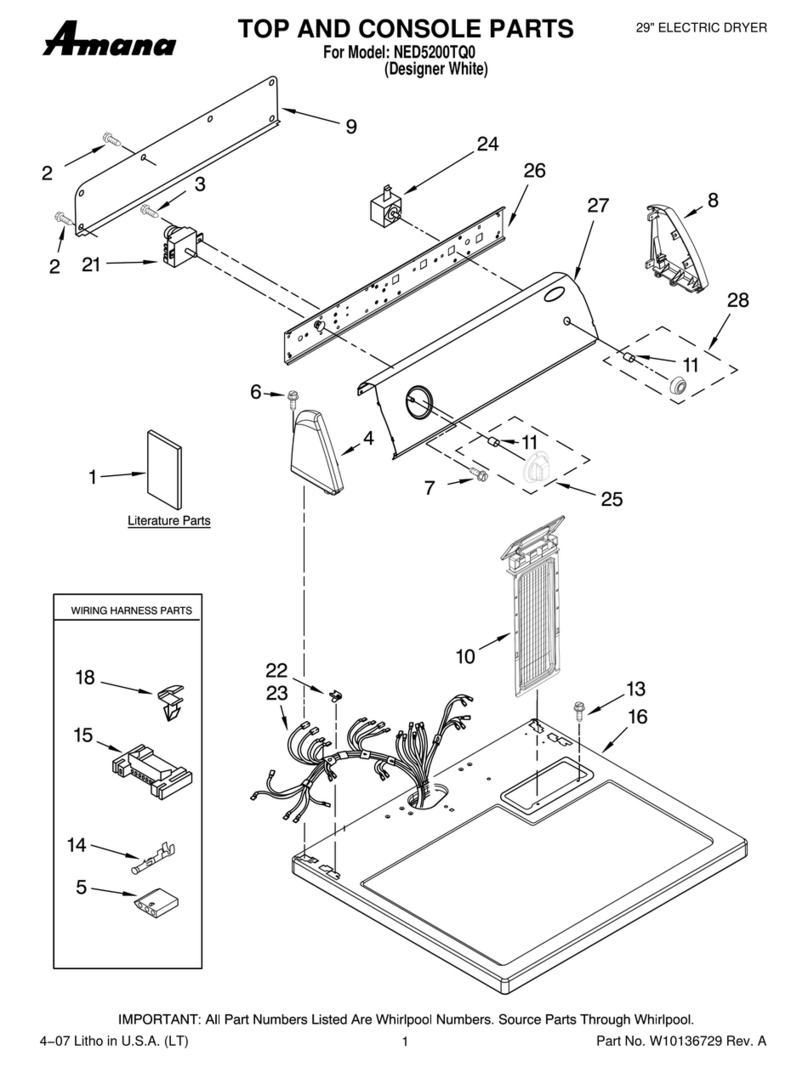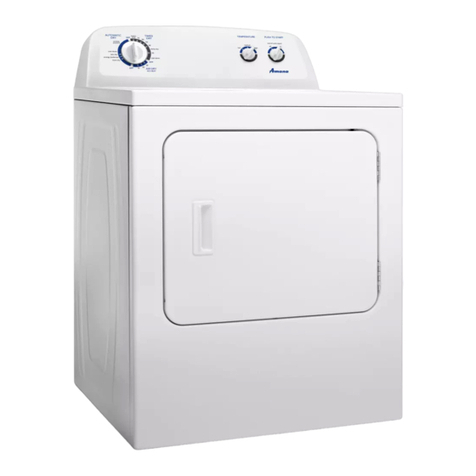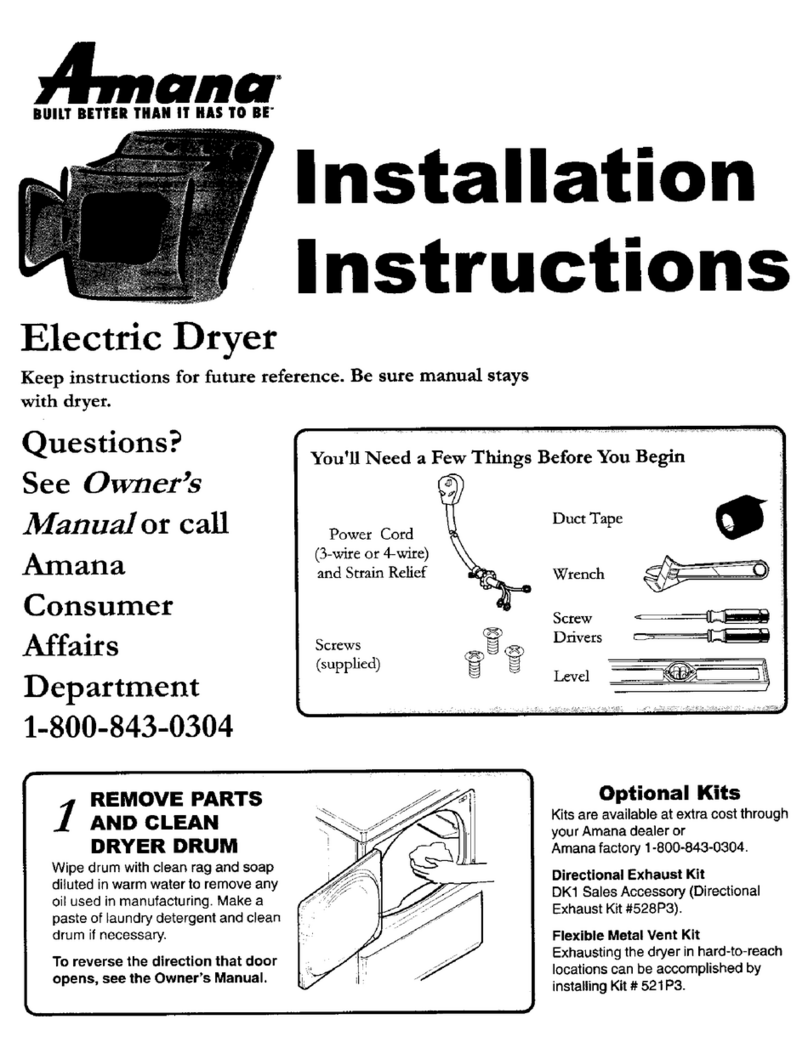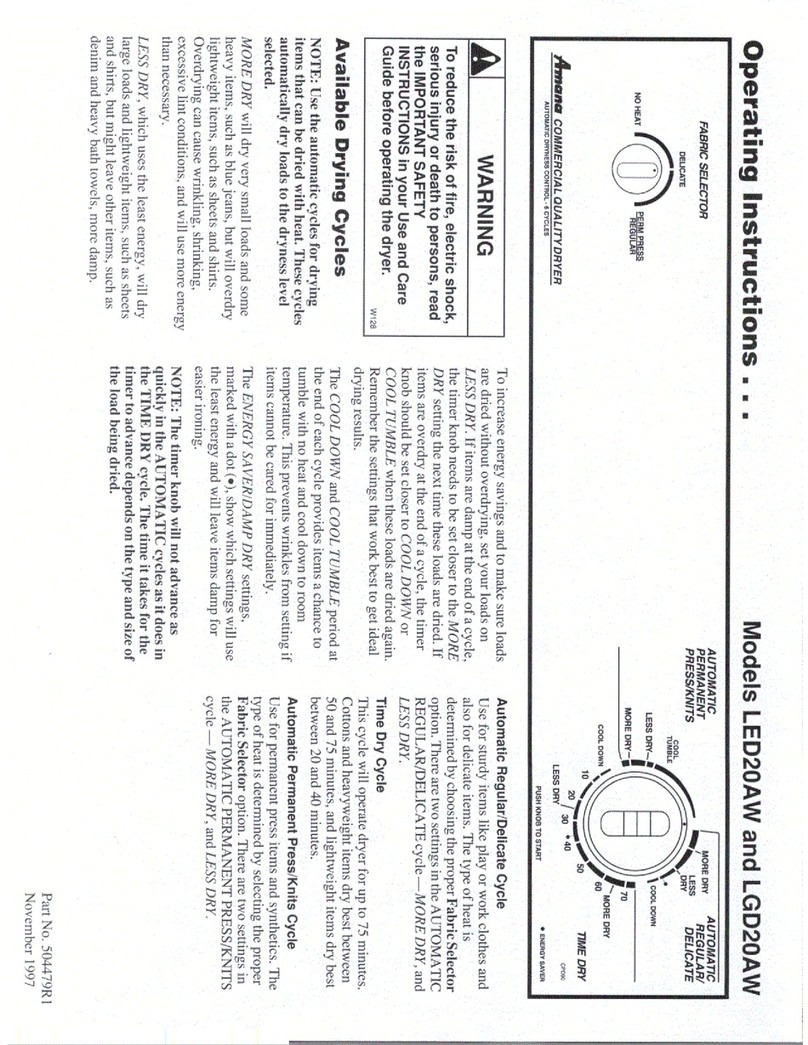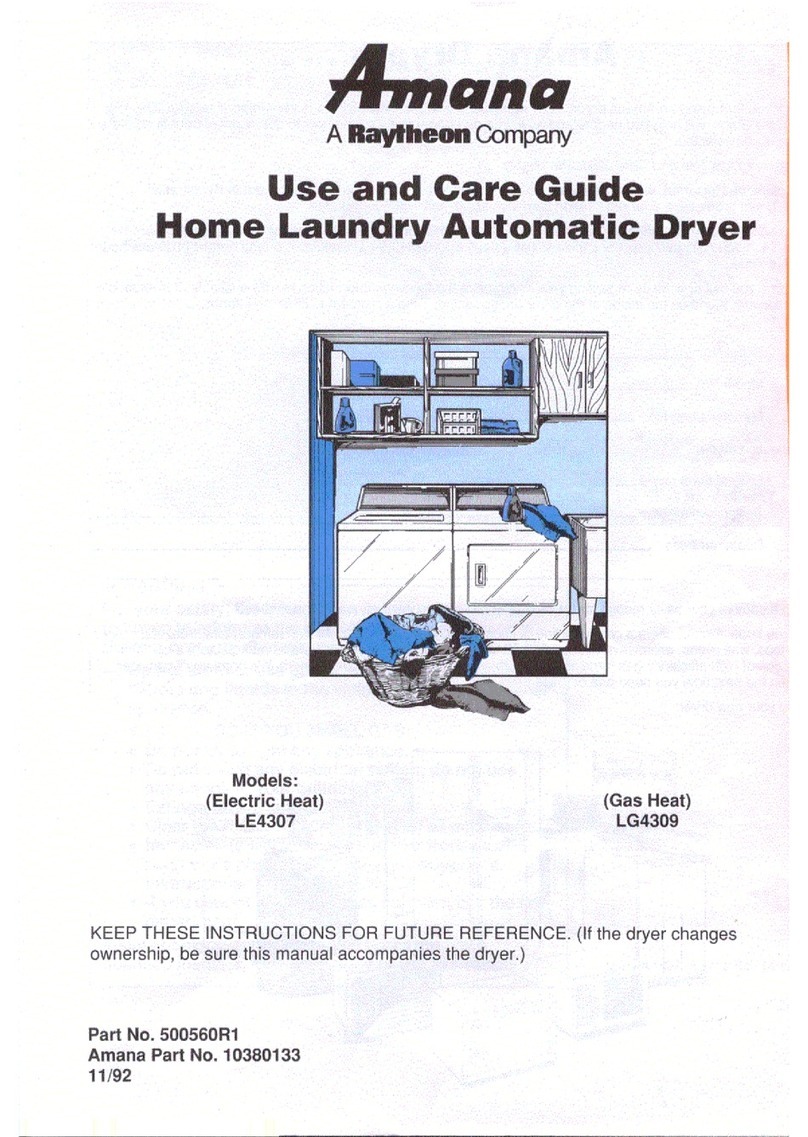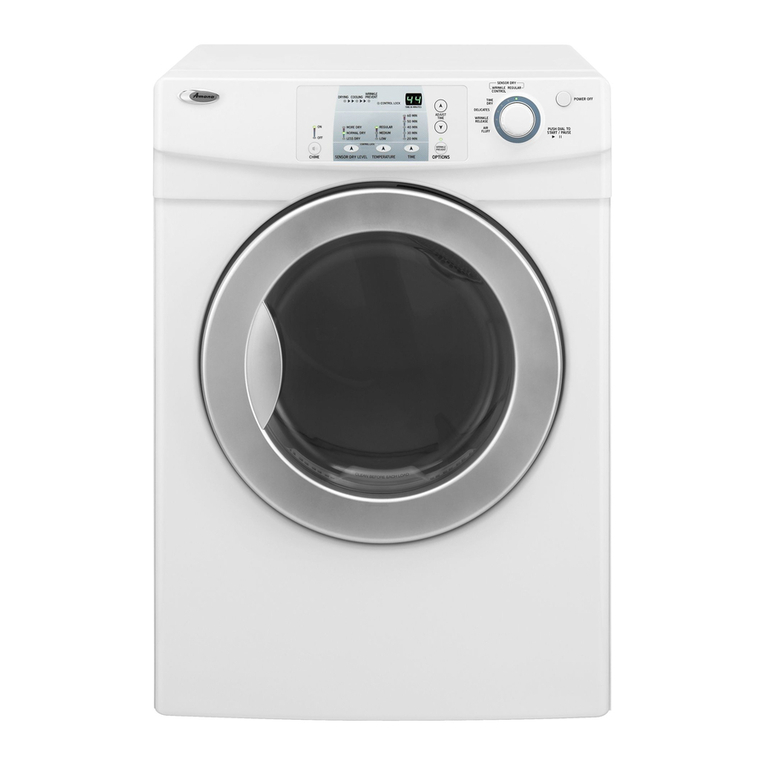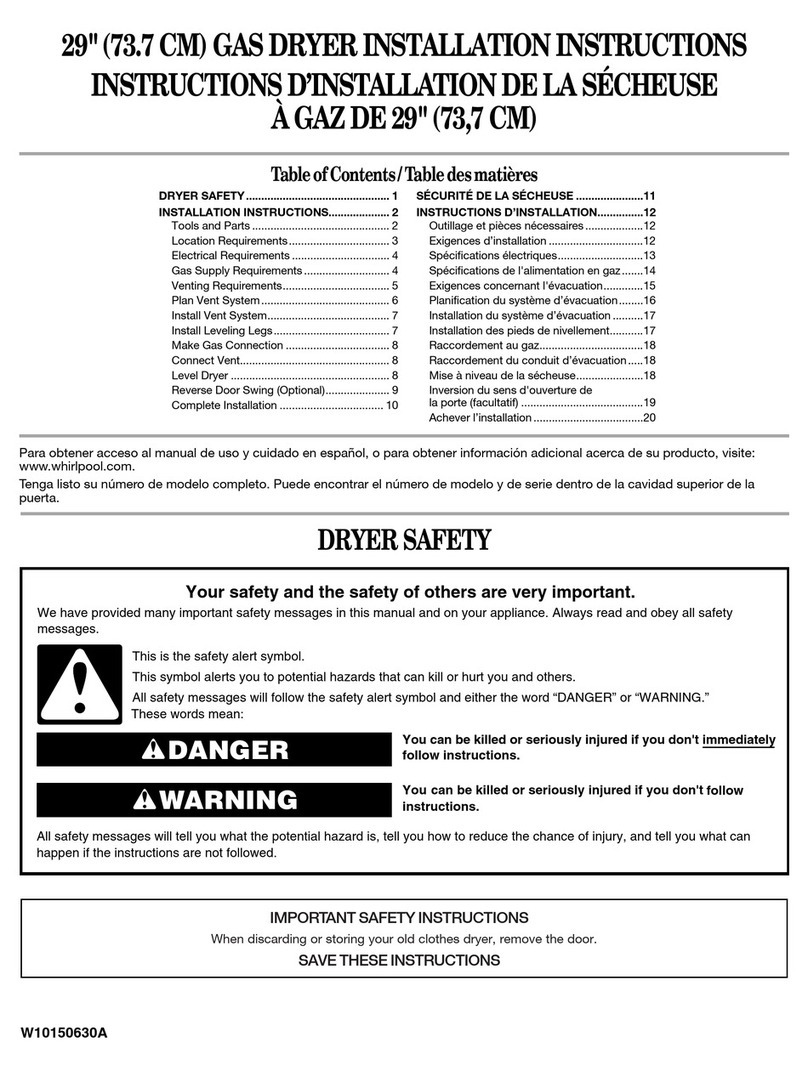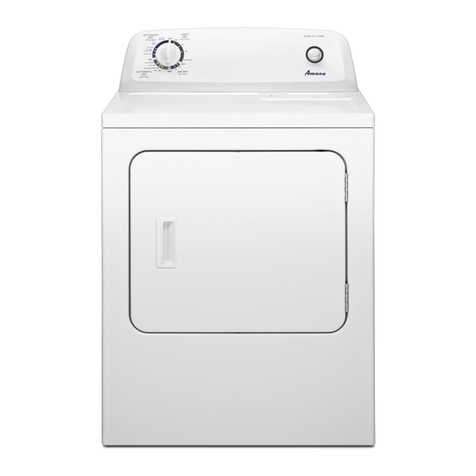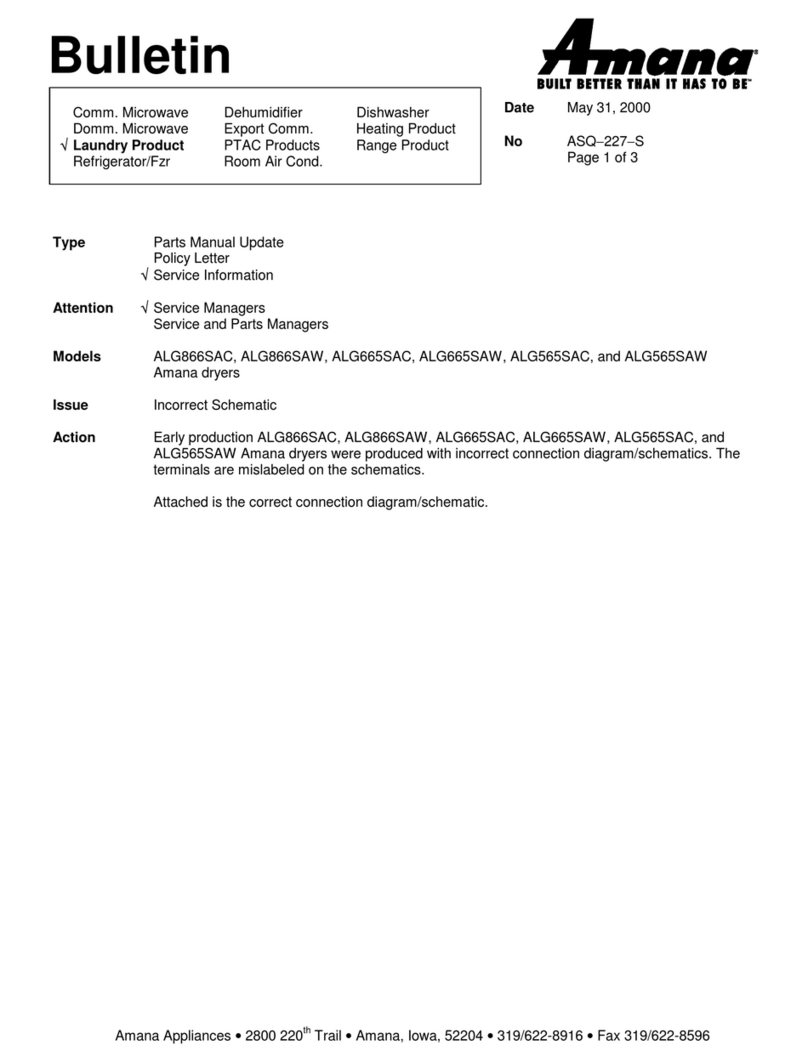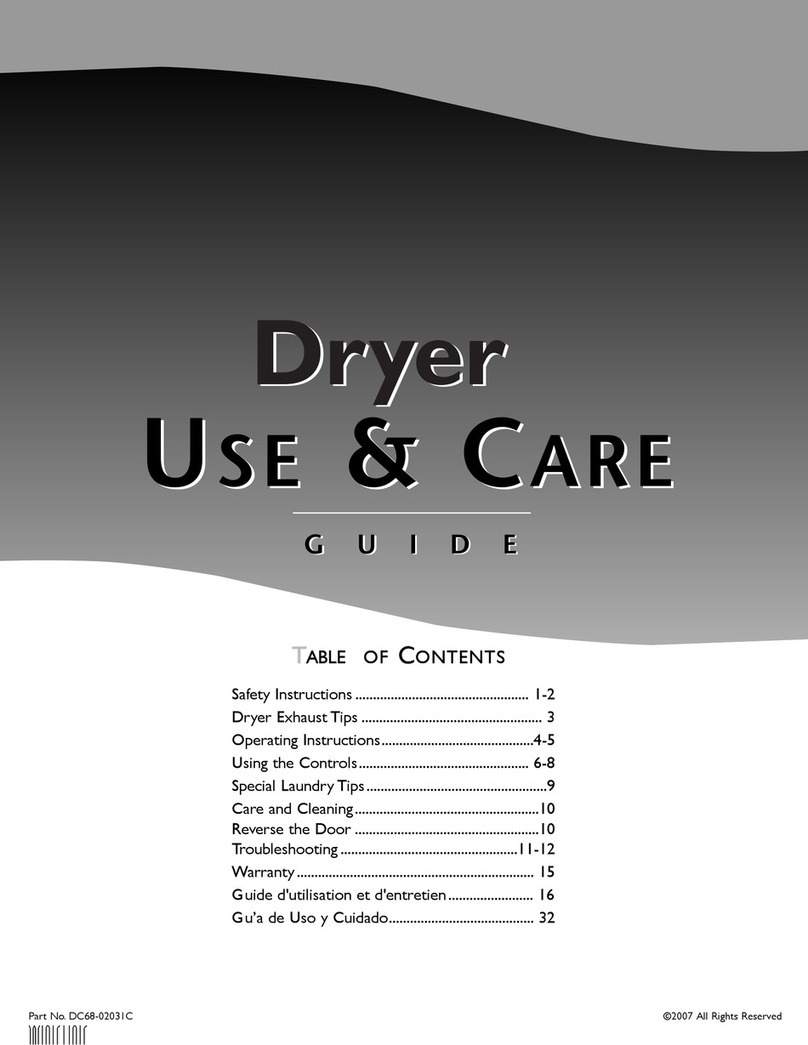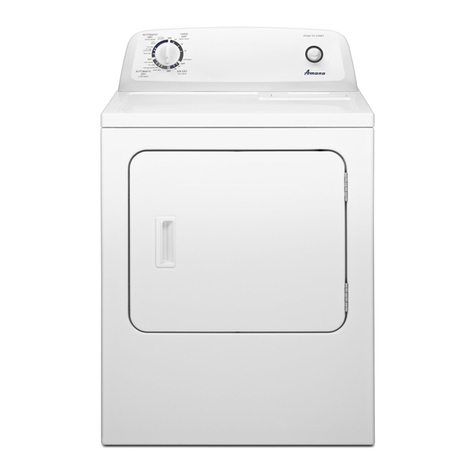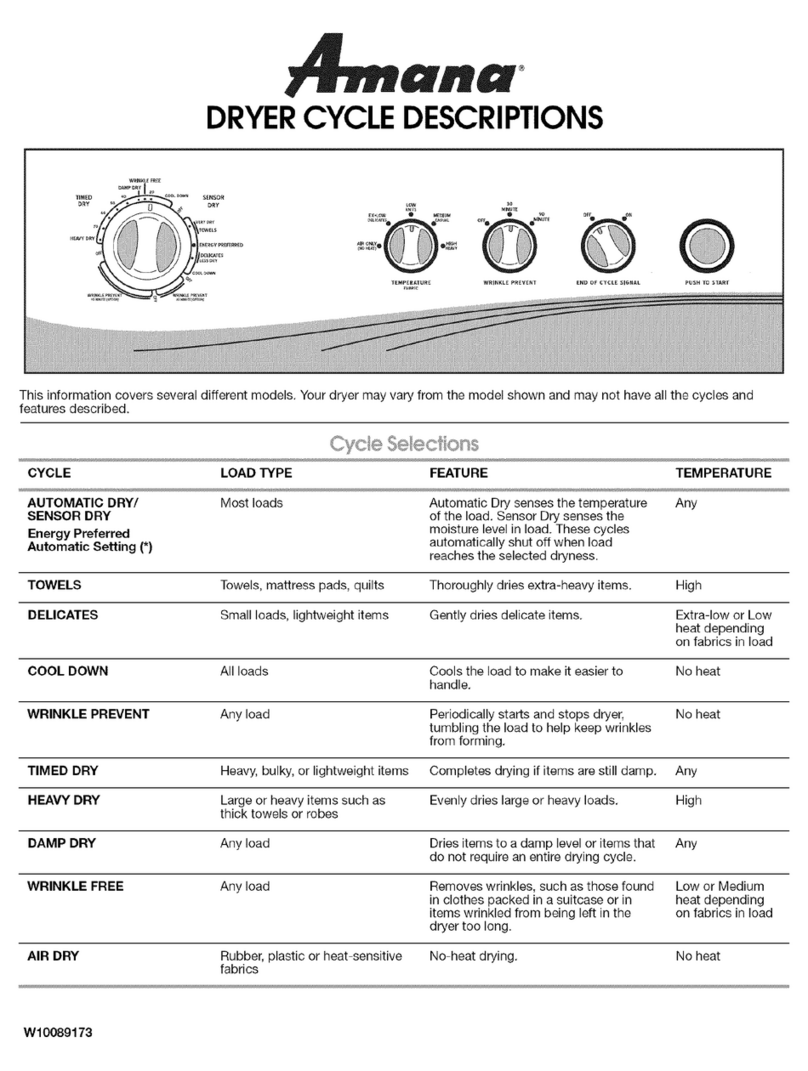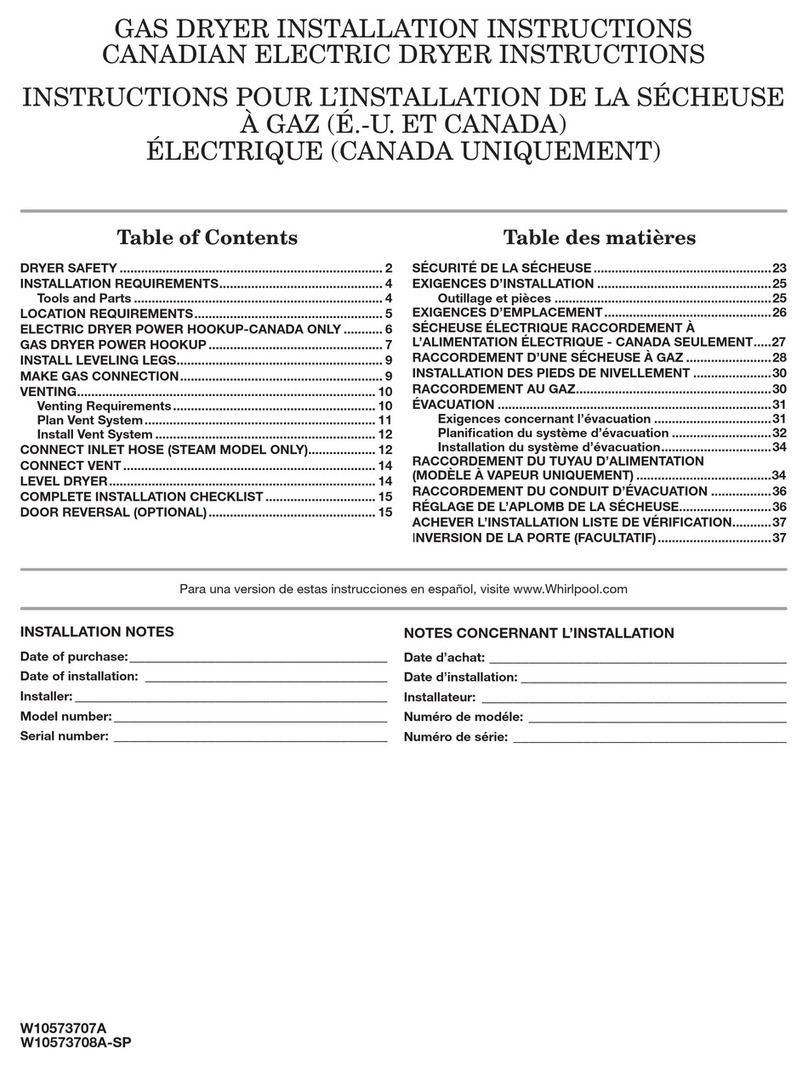IMPORTANT TO INSTALLER
Please Read The Following Instructions Carefully Before Starting To Install The Dryer. These Instructions
Should Be Retained For Future Reference.
REMOVE THE DOOR FROM ALL DISCARDED APPLIANCES SUCH AS
DRYERS TO AVOID THE DANGER OF A CHILD SUFFOCATING.
LOCATION CONSIDERATIONS
The dryer should be located to permit adequate room in front for loading the dryer, and sufficient room
behind the dryer for the exhaust system.
This dryer is factory-ready for rear exhaust. To exhaust out the bottom or left side, use the accessory
exhaust kit (see Accessories). Instructions are included with the kit.
It is important to make sure the room has adequate make-up air. The area where the dryer is located must
not obstruct the flow of combustion or ventilating air.
On gas dryers, adequate clearance as noted on the data plate must be maintained to insure adequate air
for combustion and proper operation of the dryer.
THE DRYER MUST NOT BE INSTALLED OR STORED IN AN AREA WHERE IT WILL BE
EXPOSED TO WATER AND/OR WEATHER. THE DRYER AREA IS TO BE KEPT CLEAR AND
FREE FROM COMBUSTIBLE MATERIALS, GASOLINE AND OTHER FLAMMABLE VAPORS AND
LIQUIDS. A DRYER PRODUCES COMBUSTIBLE LINT. THE AREAAROUND THE DRYER
SHOULD BE KEPT FREE OF LINT.
ALCOVE OR CLOSET INSTALLATION
_.WARNING1 WARNING -
The dryer must
be exhausted to
the outside to
reduce the risk
of fire when
installed in an alcove or closet.
An appliance installed in a closet shall have no other fuel-
burning appliance installed in the same closet.
WARNING: To reduce the risk of fire, this
dryer MUST BE EXHAUSTED TO THE
OUTDOORS. See EXHAUST INFORMATION
section.
Minimum clearances between dryer cabinet and adjacent walls or other surfaces are:
2" front, 0" top, 0" either side and 2-3/8" rear.
Closet front must have two unobstructed air openings combined total area 72 in2 min., located 3 in
min. from top and bottom.
Louvered door with equivalent air opening is acceptable.
MOBILE HOME INSTALLATION
The installation of the dryer in mobile homes must conform to the Manufactured Home
Construction and Safety Standard Title 24 CFR, Part 32-80 {formerly the Federal standard for Mobile Home
Construction and Safety, Title 24, HUD (Part 280), 1975} for the United States,) or CSA Standards Z240
(for Canada). When installing a dryer in a mobile home, provisions for anchoring the dryer to the floor must
be made. An anchor bracket kit is available with instructions (see Accessories). Locate in an area that has
adequate make up air. A minimum of 72 in2 (183 cm _ ) of unobstructed opening is required. All mobile home
installations must be exhausted to the outside with the exhaust duct termination securely fastened to the
mobile home structure, using materials that will not support combustion. The exhaust duct may not
terminate beneath the mobile home. See the section on exhausting for more information.



